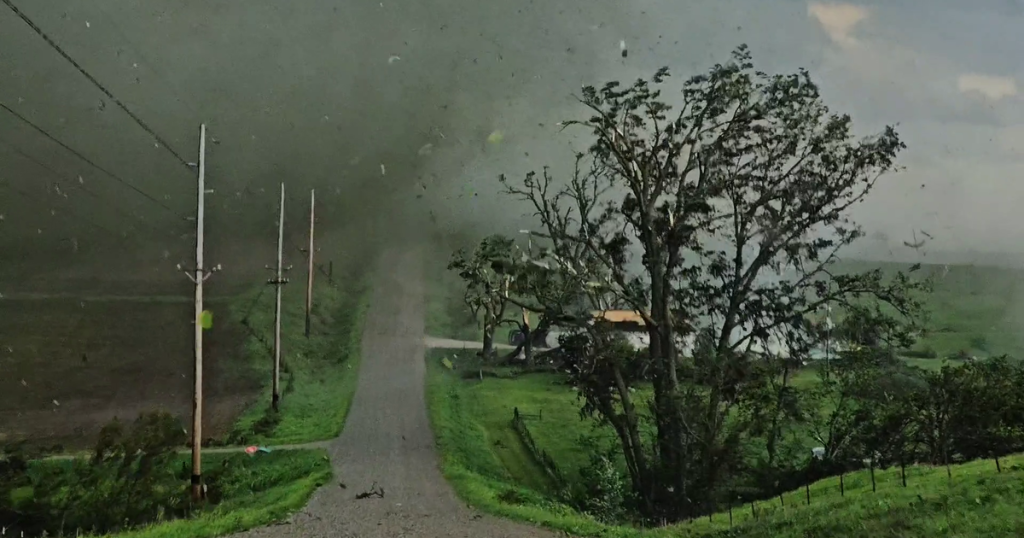Severe storms hit Nebraska and Iowa, spawning tornadoes and causing significant damage to homes, buildings, and infrastructure. The tornadoes took down large wind turbines in Iowa and caused injuries to several people in Greenfield, Iowa. Multiple tornado warnings were issued for various towns in Iowa, and thousands of homes and businesses were left without power. In Omaha, Nebraska, torrential rain, high winds, and large hail led to widespread power outages and flooding, with some areas receiving up to 8 inches of rain in a short period of time. The storms intensified throughout the night, with more destructive tornadoes expected.
The National Weather Service issued tornado warnings for parts of Minnesota and Illinois as well, with the Chicago metropolitan area facing potential wind gusts of up to 75 mph and tornado activity. A dust storm in central Illinois forced road closures, and severe weather was expected to worsen in these areas as well. The storms were part of a larger weather system that has affected much of the middle section of the country, including Oklahoma, Kansas, and Colorado. In Yuma, Colorado, hail the size of baseballs and golf balls caused extensive damage to vehicles, buildings, and streets, leading to flooding and power outages.
The storms in Houston, Texas, last week resulted in the deaths of at least seven people and left hundreds of thousands without power for days. The hurricane-force winds destroyed buildings and infrastructure, leaving residents without air conditioning in hot and humid weather conditions. The recent severe weather events across multiple states have highlighted the destructive power of storms and the importance of preparedness and resilience in the face of natural disasters. Authorities, residents, and emergency response teams are working to assess the damage, provide assistance to those affected, and mitigate the impact of future severe weather events in the region.
Several states in the Midwest, including Iowa, Nebraska, Minnesota, and Illinois, have experienced severe weather conditions, including tornadoes, high winds, and hailstorms. The storms have caused injuries, power outages, and extensive damage to homes, buildings, and infrastructure. The National Weather Service has issued tornado warnings and watches for various areas, urging residents to take precautions and stay safe. Emergency response teams are working to address the aftermath of the storms and provide assistance to those in need.
The recent storms in Iowa and Nebraska have taken down wind turbines, damaged hospitals, and caused injuries to residents. The severe weather has also led to widespread power outages, flooding, and road closures in several areas. Authorities are monitoring the situation closely and working to restore power, assess the damage, and ensure the safety of residents. The storms have underscored the importance of preparedness, resilience, and community support in the face of natural disasters, and efforts are underway to address the immediate needs and long-term recovery efforts in the affected communities.
The severe weather in the Midwest has impacted several states, causing injuries, damage, and power outages. The storms have been part of a larger weather system that has affected multiple regions, including Texas, Colorado, and Oklahoma. Emergency response teams, meteorologists, and residents are working together to address the aftermath of the storms, provide assistance to those affected, and prepare for potential future severe weather events. The recent severe weather serves as a reminder of the unpredictable and destructive nature of storms and the importance of readiness and cooperation in responding to natural disasters.


